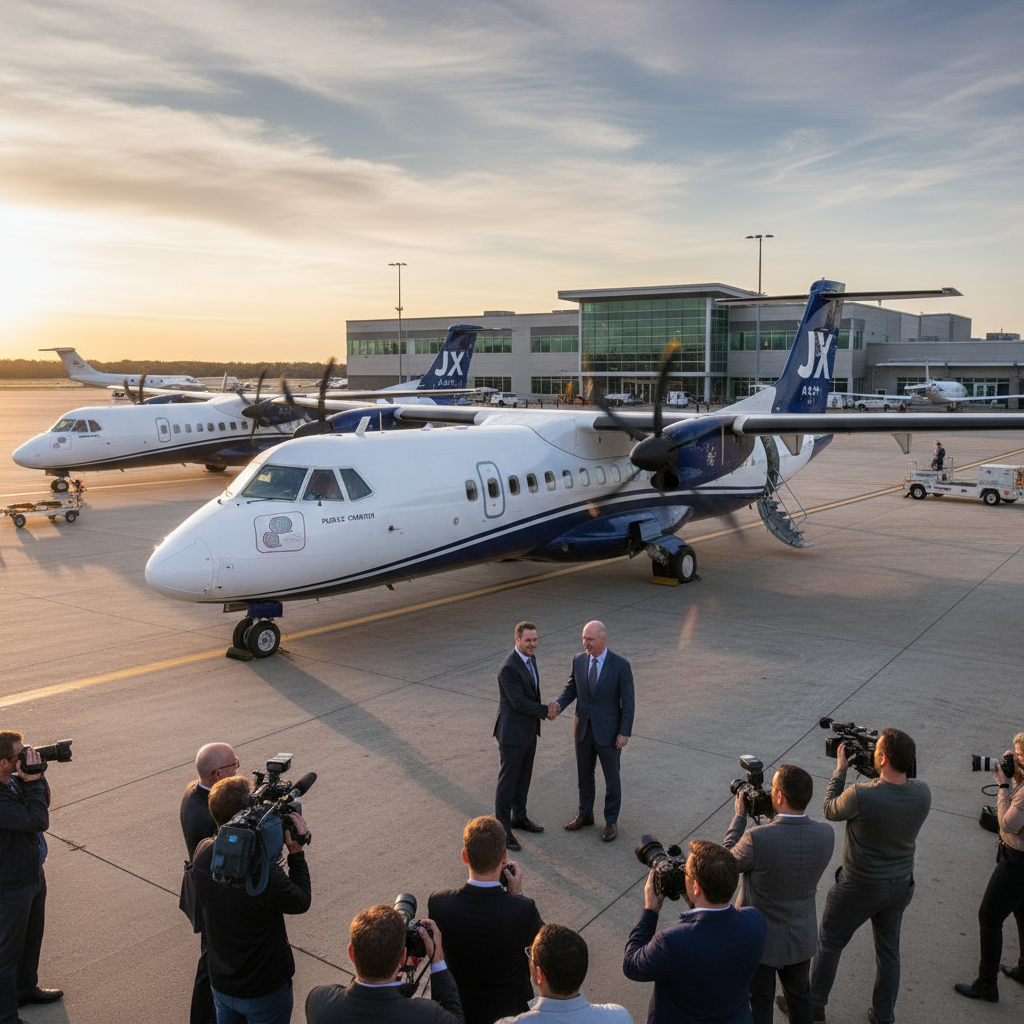Physical Address
304 North Cardinal St.
Dorchester Center, MA 02124
Physical Address
304 North Cardinal St.
Dorchester Center, MA 02124
Global aviation news tracker
Global aviation news tracker

JSX is expanding its regional reach with two new ATR 42-600 turboprops joining its fleet.
US public charter airline JSX confirmed the purchase of two ATR 42-600 turboprops in a move designed to strengthen short-haul connectivity. CEO Alex Wilcox announced the deal and said the additions will support JSX’s scheduled charter services and enhance route flexibility across regional markets.
The ATR 42-600 is a modern twin-engine turboprop known for efficiency on short sectors and quiet cabin performance compared with older regional types. JSX’s introduction of these aircraft signals a push into routes where turboprops can be more economical and better suited to smaller airports than jets, while still delivering a premium passenger experience under JSX’s public charter model.
Beyond fuel efficiency on short hops, the ATR 42-600 gives JSX operational advantages: quicker turnarounds at regional fields, access to airports with shorter runways, and the ability to match capacity to demand on thinner routes. JSX operates as a public charter carrier offering scheduled services; these turboprops will slot into that hybrid model to increase direct connectivity between secondary airports.
JSX did not specify exact deployment dates or the initial routes for the ATR 42-600s at the time of the announcement, but the carrier indicated the aircraft will join its existing fleet to support expansion plans in short-haul markets. CEO Alex Wilcox framed the acquisition as part of a broader strategy to boost connectivity and give travelers more direct options outside major hubs.
For passengers who prefer avoiding large hub airports, JSX’s new turboprops could mean more nonstop options and quicker trips for regional city pairs. The airline’s move follows broader industry interest in turboprops for efficient, low-capacity markets where point-to-point service can be most valuable.